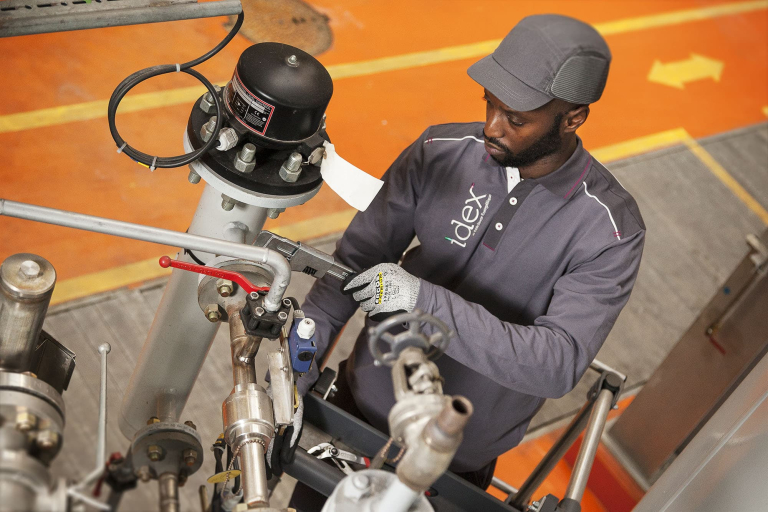- Réseau de chaleur et de froid
The Paris-La Défense district: France’s largest cooling and heating network
Idex runs the largest heating and cooling network in France
Idex runs and manages the urban air-conditioning and heating network in Paris-La Défense, Europe’s largest residential and business district, via its Enertherm subsidiary. It is now France’s largest cooling and heating network. The infrastructure here meets the daily energy needs of thousands of people, all in stringent compliance with the very best practices in force in terms of health, safety, the environment, and energy performance.
As the concessionary for Géneria (the La Défense region’s urban heating joint association) until 2032, Idex produces and distributes heat and chilled water across the residential and business district. Idex subsidiary Enertherm is the contracting authority tasked with developing and maintaining all the infrastructure needed to provide this service, at its own risk and cost. It is also responsible for ensuring the service runs smoothly.
Under the terms of the contract, Enertherm must ensure:
- compliance with applicable regulations
- compliance with the emission limit values (Valeurs Limites d’Emission, VLE) set by the operating decree energy supply in line with the technical conditions specified in the contract, and the contractual power limits
- compliance with the principle of equal treatment of clients
How the urban heating network and its heating stations work?
The Courbevoie – La Défense station and that of Nanterre were renovated and upgraded in 2005 and 2008 respectively. They supply the energy needed to power urban heating and air-conditioning for the buildings linked up to the network, for a total of 160 office blocks and public-sector offices, as well as 66 housing units and 56 retail spaces.
The Courbevoie – La Défense station comprises a heat production unit with a decanting via piggybacking zone, a desulphurisation unit, cold production, and ice storage. The idea behind ‘energy storage’ is to create flexibility and bolster energy systems’ reliability, rebalancing energy supply and demand over the long term. This storage serves as an emergency solution and provides back-up assistance when air-conditioning demand is high.

Idex’s solution for La Défense’s urban heating needs
The heating network operates via the two aforementioned stations, as well as two additional remote stations (Carpeaux and Valmy), which feed into the pipe network used to transport superheated and chilled water to the buildings’ delivery points. The pipe network is primarily installed in tunnels.
The Paris-La Défense heating and cooling network contributes to a wider sustainable development policy, thanks in particular to its four-fold certification (ISO 9001, ISO 14001, OHSAS 18001, and ISO 50001), and to the investment injected into major works in 2008 and 2014 (GFVT) that has resulted in greenhouse gas emissions being halved.
As committed as ever to achieving energy efficiency and tightly-controlled greenhouse gas emissions, Idex is currently developing plans to transform and upgrade two of the four oil-fired boilers. Once these renovation works are completed, the boilers will be fuelled by agro-pellets, granules made of agricultural waste and by-products, becoming the first heating network in France and Europe to harness this type of energy!
Facts & figures
24 km of heating network line et 14 km of cooling network line
3 500 000 m2 supplied
296 MW: power for the two heating stations
114 MW: power for the cooling station
12 MW: heating power from the thermo-refrigerating pump
8 MW: cooling power from the thermo-refrigerating pump
12 MW: power from the gas cogeneration system
45 MW: agropellet station (currently in development)